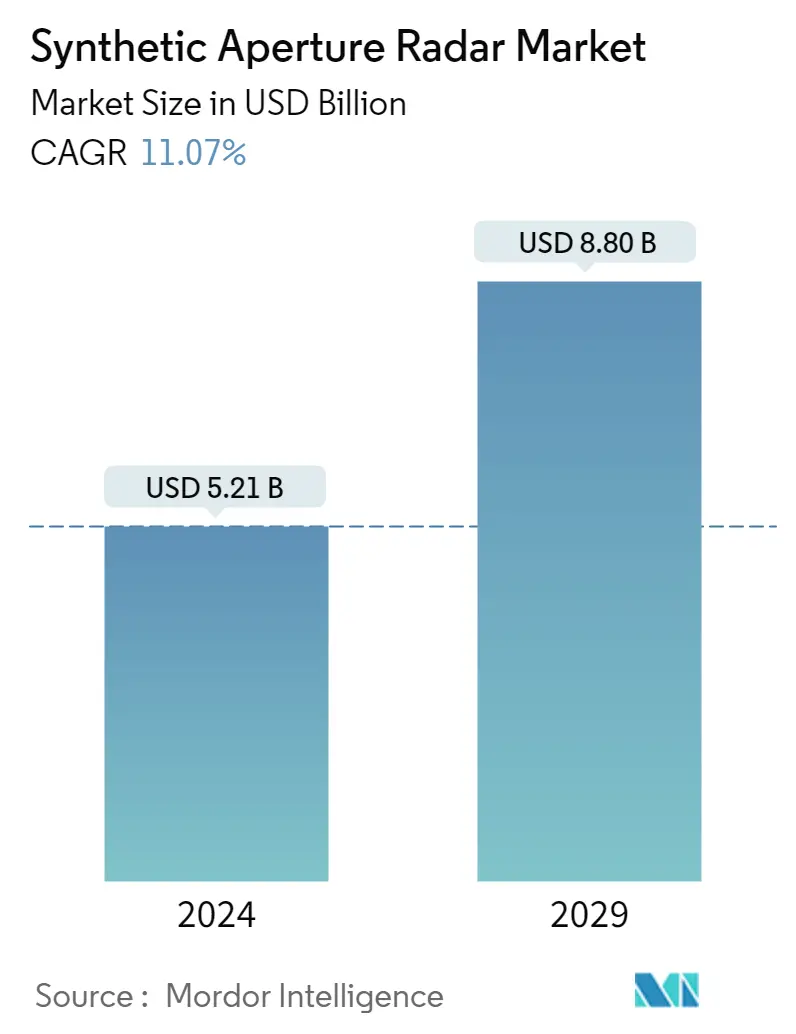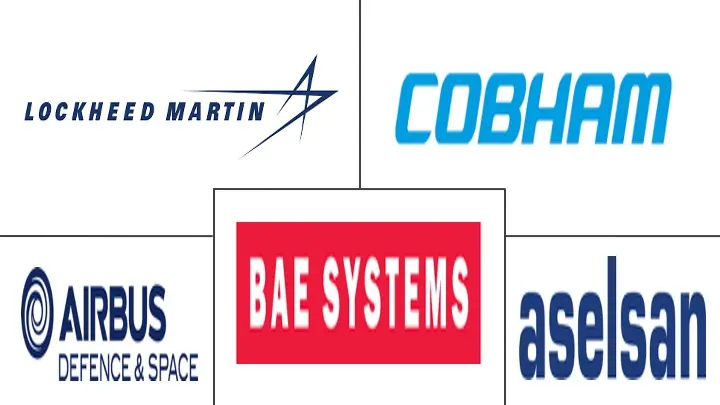Market Size of Synthetic Aperture Radar Industry

| Study Period | 2019 - 2029 |
| Market Size (2024) | USD 5.21 Billion |
| Market Size (2029) | USD 8.80 Billion |
| CAGR (2024 - 2029) | 11.07 % |
| Fastest Growing Market | Asia Pacific |
| Largest Market | North America |
Major Players
*Disclaimer: Major Players sorted in no particular order |
Need a report that reflects how COVID-19 has impacted this market and its growth?
Synthetic Aperture Radar (SAR) Market Analysis
The Synthetic Aperture Radar Market size is estimated at USD 5.21 billion in 2024, and is expected to reach USD 8.80 billion by 2029, growing at a CAGR of 11.07% during the forecast period (2024-2029).
The pandemic has led to increased demand for satellite imagery, including the economic impact of the virus and conducting remote monitoring of facilities and infrastructure. Further, the market is witnessing increased demand from the oil and gas industry. For instance, Ursa Space Systems, which offers satellite data and analytics, observed the impact of COVID-19 on global oil inventories as the company provides weekly reports on 11,000 oil storage tanks using SAR satellites.
- With the proliferation of drones, innovation in navigation, and radar systems for Unmanned Aerial Vehicles (UAV) driving, the demand for SAR systems and data is expected to play a vital role, and vendors in the market are expected to focus on expanding their presence in this space. For instance, IMSAR produces low-weight, size, and power synthetic aperture radar systems integrated with uncrewed aerial vehicles and drones; its NSP-3 is an all-weather multi-mode SAR used for land and maritime operations.
- Moreover, the European Union's maritime safety agency (EMSA) also observed an increase in the need for SAR data, especially for its Copernicus Maritime Surveillance program, which offers earth observation products to member governments for law enforcement, fishery management, pollution monitoring, and other applications. EMSA's Copernicus Maritime Surveillance program buys Radarsat-2 data through MDA and TerraSAR-X data through Airbus; it also relies on free SAR data from Europe's Sentinel-1 satellite to detect oil spills under a separate program called CleanSeaNet.
- Over the coming years, the Asia-Pacific region is expected to increase its funding in various military and environmental missions and partner with global players to expand its SAR capabilities further. For instance, the Indian Space Research Organization (ISRO), in partnership with the National Aeronautics and Space Administration (NASA), is launching a dual-frequency synthetic aperture radar NISAR in the last year.
- Despite various advantages of the SAR systems, it is significantly underused compared to traditional optical imagery. To overcome this, the Department of Commerce and the National Oceanic and Atmospheric Administration (NOAA) announced licensing of Private Remote Sensing Space Systems, which revised the regulations for licensing the operation of private remote sensing space systems under the Land Remote Sensing Policy Act of 1992.

